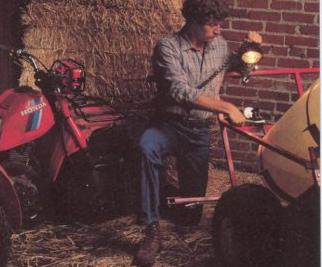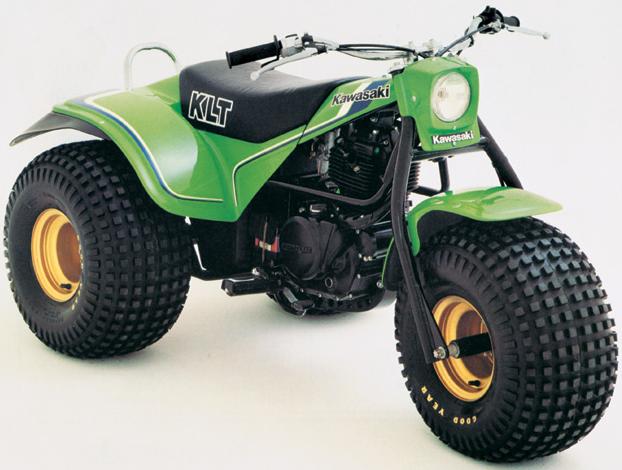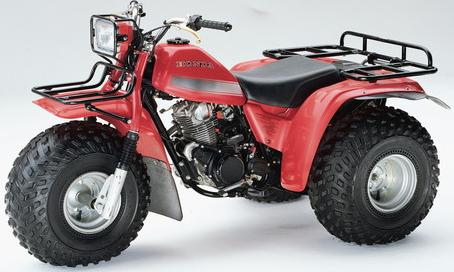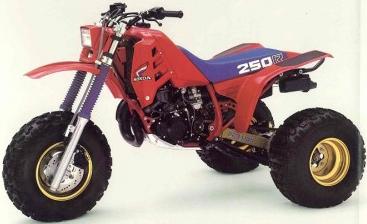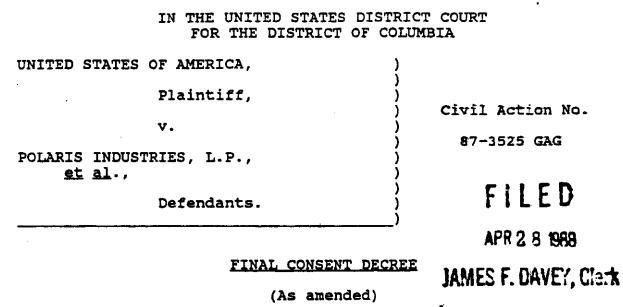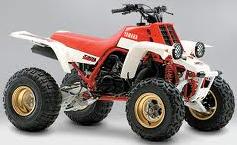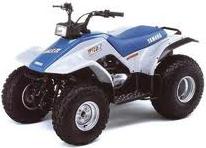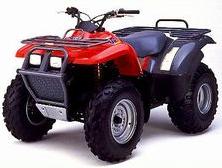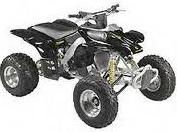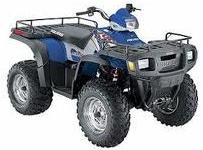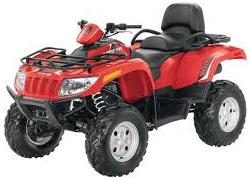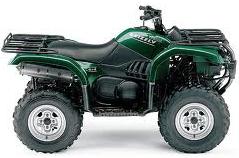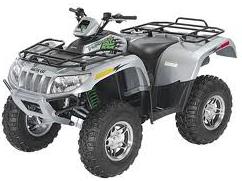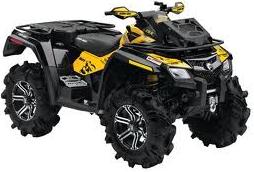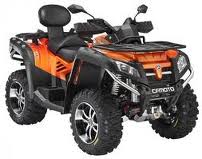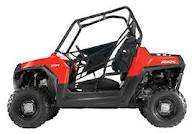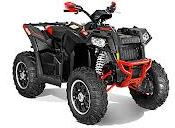1967 American Honda division requested Honda R&D Ltd. create a new product it’s dealers could offer in the winter when motorcycle sales slowed.

1970 Honda introduced the US90, the first all-terrain vehicle. It had seven horsepower with a dual-range, four-speed gearbox with an automatic clutch. It sold for $595. Later that year it was renamed the ATC90 after Honda trademarked the ATC name.
1975 The ATC90 got a new tire design including small lugs for added traction and steel hubs replaced the first hubless tires to make them less vulnerable to punctures.
1979 Yamaha enters the ATV market with its YT125 Tri-Moto.
1980 Utility usage quickly expanded in the 1980’s and ATVs became multi-purpose machines used for recreational and utility purposes.
1981 Kawasaki enters the market with the KTL200-A1, a three wheeler with a dual-mode differential.
1982 Honda’s ATC200E Big Red® had a 192cc engine and five-speed, dual range gearbox adding more versatility for utility functions. Its sealed rear brake kept water and mud out and telescopic-fork front suspension made riding more comfortable. Suzuki introduces its first all-terrain vehicles, the 1983 ALT125D and ALT50D “Trail Buddy” 3-wheelers. Suzuki unveils the first four-wheeled ATV, the LT125D with five forward speeds plus reverse, an odometer, an automatic clutch and a “Power Low Gear”.
1983 The not-for-profit trade association Specialty Vehicle Institute of America (SVIA) was incorporated. Founding members included American Honda Motor Company, Kawasaki Motors Corp., U.S.A., American Suzuki Motor Corp., and Yamaha Motor Corp., U.S.A. Yamaha brings out the YTM225DX Tri-Moto, the first shaft drive and electric start ATV. Kawasaki introduces the “Duckster”, a camouflaged 3-wheeler for the sportsman hunting market.
1984 Honda produces its first 4-wheel ATV, the TRXTM 200. The 370,000 Honda units delivered in 1984 remain the high watermark for Honda sales, making up 69 percent of total ATV sales in the U.S. that year. Yamaha also unveils its first four-wheel ATV, the YMF400, and its first model for kids, the YT60 Tri-Zinger.
1985 Honda introduced an all-new, liquid-cooled version of the 250R that makes 38 horsepower and offered almost 10 inches of suspension travel in the front and rear. Kawasaki introduces its first four-wheeler ATV, the Bayou 185. Polaris enters into the ATV market.
1987 The major ATV manufacturers and the CPSC sign the preliminary Consent Decree in which the government expresses its concern over the safety of operating an ATV (this is where 3-wheelers get the hammer dropped on them). Suzuki stops making 3-wheelers, but now offers 11 four-wheeled models. The high performance LT500RH has a liquid-cooled two-stroke engine with automatic exhaust control, highly adjustable long-travel suspension, and triple hydraulic disc brakes. Yamaha’s 2-stroke Banshee 350 is the first twin cylinder ATV engine; it wins the Baja 1000 on the first try. The Big Bear 350 is the first Yamaha 4×4 ATV. Kawasaki’s line-up has grown from 2 models in 1981 to 8 in 1987. The Tecate 4 four-wheeler uses the KX motocross-based 2-stroke motor and it’s also the first year for the 4-stroke Mojave 250 sport.
1988 Honda opens first Rider Education Centers in Colton, California and Irving, Texas.
1989 Yamaha introduces the Pro-Hauler, the first ATV with a cargo bed.
Honda opens Rider Education Centers in Alpharetta, Georgia and Troy, Ohio.
1991 The first automatic Yamaha ATV is the Breeze, a youth size model.
1995 Arctic Cat enters the ATV market.
1996 Arctic Cat begins to retail ATVs.
1997 The Prairie 400 4×4 is Kawasaki’s first CVT (fully-automatic) equipped ATV and Kawasaki is the first Japanese company to offer a full-sized belt-drive model. The Prairie 400 is honored as ATV Magazine’s first “ATV of the Year”. Honda unveils its Electric Shift ProgramTM(ESPTM) on an all-new Foreman ES 450.
1998 Honda conveys the advantages of its longitudinal power train to a larger group of ATV users with the 2WD FourTrax ReconTM. Bombardier launches its first ATV model, the Bombardier Traxter.
1999 KTM Sportmotorcycles U.S.A., Inc. joins SVIA.
2000 The new Honda Rancher combines the compact, powerful efficiency of the 329cc longitudinal-powered drive train in an all-new chassis. The new Honda Rubicon model is a liquid-cooled, overhead-valve, longitudinally mounted 500cc engine with an all new continuously variable Hondamatic transmission with more than 100 patents pending. Cannondale unveils its first prototype ATV, the FX400.
2001 The Kawasaki Prairie 650 4×4 is the first and only V-Twin powered ATV on the market. It is the first to offer a completely sealed, oil-bathed multi-disk brake in the rear, and a rider-actuated front differential control. The first FX400 ATVs roll off the Cannondale assembly line, and later in the year the Nac’s/Cannondale ATV Racing Team is announced. Magazine reviews praise the Cannondale FX400 as “a thrilling addition to the sport quad market” and the “highest-tech quad ever developed.” Cannondale’s second ATV, the ’02 Cannibal begins to ship to dealers. Cannondale plans to introduce three more ’02 ATVs, the Moto 440, Blaze 440 and Speed. Arctic Cat is the first ATV manufacturer to produce ATVs for leading farm equipment manufacturer Massey Ferguson.
2002 Arctic Cat introduces the first fully independent suspension ATV (without a sway bar), and their first youth model, the Arctic Cat 90. Bombardier supplies ATVs to the 2002 Salt Lake City Olympic Winter Games.
900,ooo Units!
2003 ATV sales in the United States reach nearly 900,000 units.
2004 Polaris Industries introduces, the Sportsman 700 Twin EFI is the world’s first electronically fuel injected 4×4 ATV.
2005 BRP & Arctic Cat introduce the first Type II ATVs into the US market.
2006 Yamaha introduces the first ATV with EPS (Electronic Power Steering), the Grizzly 700. John Deere stops selling ATVs.
2007 KYMCO joins and KTM re-joins Special Vehicle Institute of America. CF Moto American branch was founded. The economic recession begins toward the end of this year.
2008 The displacement battle continues with Arctic Cat taking the top spot for the year with their new ThunderCat 1000, twin-cylinder four-stroke sport/utility model.
2009 Yamaha produces an all new Raptor 90 to entice the youth market. The powersports industry suffers big decreases in unit sales.
RECESSION
2010 Powersports manufactures continue to dig out of the effects of the recession.
2011 Can Am introduces the Outlander X mr, the first production ATV to feature an onboard air compressor to manage front and rear Fox air adjustable shocks. CF Moto makes a run at the American 2-Up big bore market with the introduction of the X8 model.
2012 The reality that UTV sales could surpass ATV sales becomes more and more apparent. Polaris unveils its new Scrambler XP 850 model, the first model to directly compete with the successful Can Am Renegade in the high performance big bore sport 4×4 segment.




